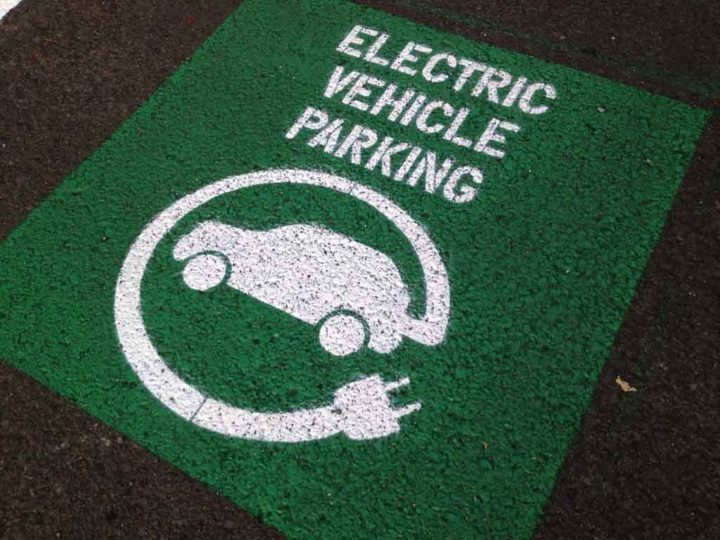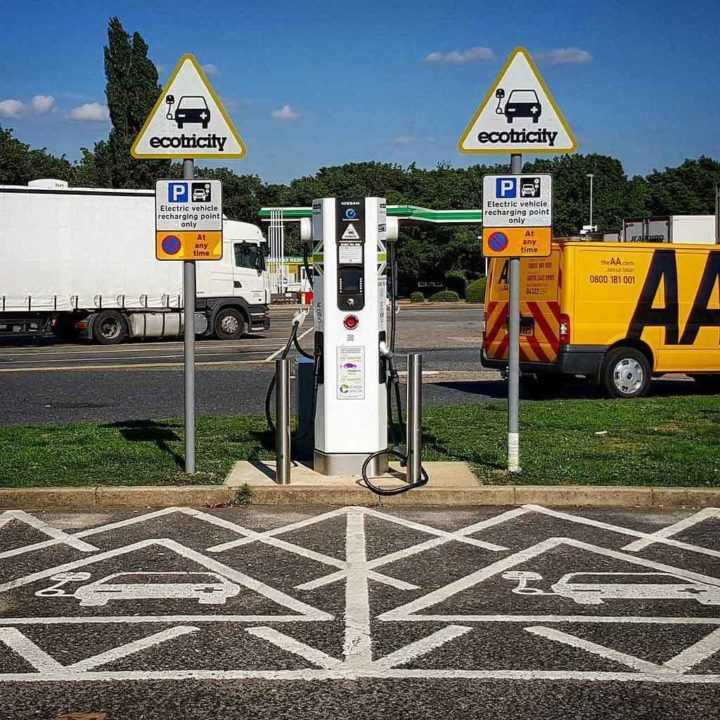Electric vehicles: defining ambition
Is the switch to electric vehicles happening fast enough?
By George Smeeton
Share
Last updated:
It is very clear in the automotive world that the UK's car fleet is evolving, and getting quieter. The number of pure electric vehicles is creeping up every month - there are now over 200,000 plug-in cars driving around the UK's roads.
The change is happening, but the big question is: is it happening fast enough? Should the Government be doing more? Or less? There are already various policies in place attempting to persuade us to switch to electric vehicles (EVs). Are they ambitious enough?

There are two flagship UK policies driving the switch to electric drivetrains. The first is the ban of sales of new combustion vehicles from 2040. Since the average age of a car at scrappage is 14 years, this means that a new car bought tomorrow can still be replaced by a combustion vehicle when it dies, and - to be blunt - that is way too late for our air pollution and climate change targets.
Dates
Firstly, some facts. Compared with those countries that have declared an intention to ban, 2040 is simply not ambitious. In fact, 2040 is joint-last (alongside Spain, France and Taiwan). Scotland’s ban starts in 2032. Ireland, Denmark, Israel, the Netherlands, Slovenia, Iceland and, most recently, Sweden have all announced bans from 2030. Norway is the winner here, with its ban starting in 2025. However, putting the countries of the world to shame are the cities of the world, where complete bans on using combustion vehicles have been announced (not just new sales).
Indeed, 26 cities have pledged to “ensure a major area of the city is zero emission by 2030” - and London, Birmingham and Manchester have signed up to that pledge (which begs the question: just which areas of these cities will combustion vehicles be banned from?). One Chinese province (Hainan, which admittedly is the smallest one) banned sales of new combustion vehicles from this March. It wants to go even further, by banning all combustion vehicles from the province by 2030.
But that is comparing the UK with other countries. Perhaps the reason the ban is 2040 is that is the earliest date that the global automotive industry can work to? And that therefore all the above countries and cities are wrong?
Nope, not at all. Volvo is aiming for 50% of its sales to be fully electric by 2025. General Motors has announced that it will have 18 fully electric models by 2023. Jaguar Land Rover (JLR) has pledged that every new model line will be electrified from 2020. The largest car company in the world (by sales), Volkswagen (VW), has committed a cool €20 billion to electrify all 300 models - with 50 fully electric models available - by 2025. Finally, a recent Reuters analysis of the automotive industry found that there is some $300 billion being invested worldwide in EVs over the next decade. It is fair to say that almost all automotive R&D is going into making either electric or autonomous vehicles ‘better’. And all the dates publicly declared so far by the automotive companies to hit some electric target are in the 2020s.
So it’s clear that the date of the ban could be moved forward. In fact, repeatedly calling the UK target ambitious - that is, some form of achievement if hit - is as confused as a Chris Grayling ferry order right now. The date could also be split - petrol and diesel bans could start on different dates. Indeed, in the UK if diesel sales keep falling at the rate they are falling (new registrations in 2018 were down a massive 29.6% compared to 2017, which itself was down 17% on 2016), then sales will effectively be gone by 2025. If the Government announced a ban on new diesel sales from, say 2027, on current trends it would actually not change anything in the real world, but would instantly make the UK one of the international climate leaders in this area.
Incentives
The other flagship policy aiming to boost new sales is the £3500 subsidy offered on new electric vehicles. So how does that compare with our neighbours?

Well, currently £3500 is worth about €3850. Both Belgium and Germany offer a €4000 incentive. Ireland beats them by paying €5000. Sweden offers €5700, but is still a long way behind France, which offers a bonus-malus incentive: not only does a buyer get a subsidy of €6000 for buying an EV, they receive a further €4000 if an old diesel is scrapped at the same time. However, purchase subsidies are not the only way of encouraging uptake.
The out-and-out European EV leader, Norway, does not offer a purchase subsidy at all, but instead waives purchase taxes: VAT and a ‘weight tax’ are applied to new vehicle purchases (the Norwegian VAT rate is 25%), but are waived for EVs. This usually means that this policy alone makes EVs cheaper than their combustive forefathers, and yet Norway also has a raft of other measures to encourage uptake. This explains why sales of pure electric vehicles in Norway in 2018 were 31% of the total market (versus a comparatively paltry 0.7% in the UK).
So again, amongst those countries that have purchase incentives, the UK does not particularly stand out. But it’s worth asking if purchase subsidies are even needed - after all, no government wants to pay out more than it needs to, surely? Here the picture is slightly more nuanced. On a total cost of ownership model - that is, including purchase costs and running costs together, those green sandal-wearing beardy hippies UBS estimated that a new EV became cheaper over its lifetime than a new combustion vehicle last year. Investment bank Morgan Stanley estimated that the up-front purchase price of an EV will be cheaper than the fossils in 2025, as does Nissan. Bloomberg New Energy Finance estimated last year (2018) that this will happen in 2024. (and what’s interesting is that this date is coming ever closer. In 2017, BNEF had the date pegged at 2025).
So what does this mean for UK policy? Subsidies will definitely not be needed in just a few years, and arguably are not needed now. And yet, since buying an EV brings about a host of societal benefits (better air, which leads to less health spend and a healthier workforce; less noise pollution, better energy security, which leads to less money being exported; lower running costs, which leads to more disposable income, which leads to an economic boost) as a nation we should want more EVs on the road quicker.
The question of how uptake should be encouraged remains. Should the stick of an outright ban be moved forward? Should the carrot of purchase taxes be upped? Or is it OK that our ambition levels are set at mediocre? Regardless, whatever your level of ambition, for the UK to ensure its climate change and air pollution targets are hit, we need to kick our combustion habit pretty quickly.
(Just as a footnote. For those hoping that a change in Government would see an immediate ramp-up in EV-uptake policies, you would - currently - be sadly disappointed. Labour’s environment policies are summed up in a pamphlet it released at its party conference in September 2018. And that pamphlet does not contain a single solid EV commitment. The closest it gets is a pledge to “position the UK at the forefront of the development, manufacture and use of ultra-low emission vehicles”. It really is hard to be worse than the joint-least ambitious commitment, but Labour has managed it.)
Share